August 31, 2013
The urge to take nature photographs is in some ways a curse. I wouldn’t be surprised to learn that the APA’s Diagnostic and Statistical Manual of Mental Disorders includes wildlife photography as a distinguishable variant of OCD. My frequent field/photo buddy John and I were talking about this just a couple of days ago. John’s camera body had become frozen in Err mode; no matter what he did to it, it continued to flash the generic error message and would do nothing else. He was a bit distraught about the prospect of going into the field to look for critters without a camera. I share his angst. I have trouble separating any aspect of natural history study from the compulsion to take pics of the object of my interest. I’m sure I would be a better birder if I occasionally ditched the camera and just looked at birds. In fact I do that when I teach Ornithology and lead field trips, but only because the mental dexterity required to look for birds, communicate effectively with the students, and try to take photos simultaneously usually exceeds my limited mental resources. I lead those field trips with a small amount of trepidation that some amazing photo op will present itself during the trip and I won’t capture it. Another downside of the photography bug manifests as a sense of incompleteness on those occasions when I do go into the field to natural historize and take photos, and no photo opportunities are to be had. Any time spent in the field is still incomparably rewarding, but for me it’s diminished somewhat if I don’t get at least a photo or two that I find satisfactory.
That was the state of affairs this morning, as I hit the road to try to find some fall migrants. Preferably warblers. Armed with my brand new DeLorme Atlas and Gazetteer, the plan was to hit some reliable spots and maybe explore some new ones. What a resource that volume is – my old copy, which I probably paid something around $15 for more than 20 years ago, was terminal. The covers were ripped and detached. Several of the individual maps for areas I visit often were also torn loose and stuck between the still-attached pages. Still, maybe the best $15 I’ve ever spent. I’ve used and abused the hell out of my old Gazetteer. So I finally sprung for the $25 to buy a new one. I’m not the most digitally connected guy on the planet (don’t own a smartphone), but I do make frequent use of Google Earth to plan trips into new areas. The wealth of information available from aerial imagery is truly stunning. Still, I like using good old-fashioned paper maps. There’s something very comforting to me about having a detailed map on the passenger seat when I’m visiting a site for the first time. Unanticipated benefit of the upgrade – many of the roads, and other aspects of the landscape such as boundaries of state and federal public lands, had changed since my old one was published. Who knew?
I hit a couple of my favorite patches close to home soon after sunrise; the entrance road to Lake Woodruff NWR, Chuck Lennon Park in DeLeon Springs, DeLeon Springs State Park, but not much was happening. There were a few decent birds (let’s be honest; there’s really no such thing as an indecent bird) around, but absolutely nothing happening photo wise. I saw my FOS worm-eating warbler at Woodruff, but never came close to getting a photo of that handsome little parulid. One of the not uncommon migrants that is on my photo want list. I have some mediocre, ID-level shots of these understatedly elegant little warblers, but am still waiting for that primo photo op in spectacular light. Not this morning, though. So even that sighting, of a warbler I don’t see very often, was somehow lessened in impact because I had no tangible evidence of having seen it. And I think for me that’s a big part of what photography represents – a hunter/collector approach to the natural world. When I see something that excites me in the field, I want a trophy to commemorate the occasion.
Chuck Lennon produced a handful of passerines, but all were common species, and most were residents. A red-eyed vireo or two, several northern parulas, blue-gray gnatcatchers, cardinals, Carolina wrens, and so on. A bunch of killdeer were on one of the baseball diamonds, but way too far away for photography, and therefore of limited appeal. Nothing of note at DeLeon Springs, though I spent only a few moments there. Too many people.
Next on the agenda was the Bluffton area of Lake George State Forest, a site I’ve visited only a few times in the last year or two. A few birds moving, but all the same stuff I’d seen earlier. It was around 9:30 or so by this point, and I was getting bummed. I hadn’t taken a photo yet, and the magic light of morning was done. On sunny mornings, for me the best light for wildlife photography starts about 30-45 minutes after sunrise (I’m not a fan of the overly warm “golden light” that sometimes occurs right after sunrise; white birds that appear yellow or even orange don’t appeal to me much), and lasts until no later than an hour and a half after sunrise. I’ll still take pics after that period, but the richness and accuracy of color and detail continue to degrade as the morning wears on. Never mind the fact that I was having a perfectly lovely morning in beautiful habitats, seeing some cool birds and neat flora, and just in general soaking up the outdoor experience; I was still dissatisfied at some fundamental level because I had no photos to show for my morning.
DeLorme on the seat beside me, I left Bluffton and headed for new territories. Riley Pridgeon Road travels north from SR40 through some parts of Lake George State Forest I’d never been to. Which is always cool, but the several miles of forest roads I drove were similar to other parts of the forest I’ve been to – a lot of fairly young pine plantation, which is structurally pretty simple and uniform, and consequently low in bird diversity. Patchiness and ecotones increase diversity. I picked up my first prairie warblers of the morning, and even got photo ops of one, but they were marginal at best. In the dappled light of a winged sumac shrub, I knew they would be cluttered and unevenly lit. Happy to get them, but also still dissatisfied with the morning as a whole.
By 10:30 I was thinking about calling it quits and heading home. I had taken Volusia Bar Road to its dead end near the shore of Lake George, and passed through some fantastic looking habitat, so I was kind of jazzed about the prospect of coming back when there were actually BIRDS present, but they weren’t happening just then. In particular, I found about a quarter-mile stretch of the road bordering a slough, surrounded by a dense 15-20 foot high stand of red maple, with direct morning light. It reminded me very much of a similar piece of habitat at Emeralda Marsh Conservation Area where I consistently saw good concentrations of warblers and other migrants when birds were moving. Definitely a spot to return to later in the season as the magnitude of migration increases. No evidence of that this morning thought.
So returning eastwards on Volusia Bar Road, I was ecstatic to see a big snake crossing the road ahead. My first looks were strongly backlit – all I could tell at first was that it was a heavy-bodied snake. I’ve been hoping to find an eastern diamondback crossing the road for the last several years, and for a second or two it seemed like this might be it. But the habitat was pure cottonmouth, and as I got a bit closer it became clear that’s what it was. No matter. Big, beautiful, healthy-looking snake, completely exposed, in no hurry to get across the road – photo ops. Here’s what I’d been looking for all morning.
Cottonmouths can be common as dirt in the flatwoods and their associated roadside ditches, depressions, and swales that hold standing water at times, so it wasn’t like it was some amazing rarity I’d turned up. After pigmy rattlesnakes, cottonmouths are the most common venomous snake in central Florida. Back in the late ‘90’s, before the catastrophic summer of wildfires in ’98, Terry Farrell and I used to make frequent trips to Tiger Bay State Forest in the spring to find cottonmouths. Road-cruising up Gopher Ridge Road, we would at times find as many as 30-40 cottonmouths in an afternoon. From the road. Most were in roadside ditches and pools that were shrinking late in the dry season, concentrating the small fish and tadpoles into a dense stew of snake food. Cottonmouths would gorge themselves on the hapless fish, which in the final stages of pool shrinkage, had absolutely nowhere to escape to. The snakes would at times prise nearly dead fish or tadpoles out of the damp mud. Unfortunately, the wildfire summer of ’98 drastically changed the ecological dynamics and hydrology of that section of Tiger Bay, so such fantastic aggregations are no more.
So I had tons of photos of cottonmouths, doing things vastly more interesting than crossing a road. But on this particular day, for me that animal might just as well have been a first Volusia County record of a canebrake rattlesnake or something similarly spectacular. And she was totally cooperative. She let me drive to within about 10’ of her for my initial bout of record shots, and then stayed right where she was while I jockeyed the car back and forth to catch her from several angles. She was acutely aware of my presence, tracking me visually and tongue-flicking occasionally. But she wasn’t threatened at all – not once did she do the signature cottonmouth gape, vibrate her tail, rear to strike, or show any other sign of an aggressive or defensive response. Cottonmouths (and pigmy rattlesnakes) have gotten a bad rap for their supposed aggressiveness; they will certainly go bad ass when forced into a defensive situation, but they would far rather stay chill and crawl away without any fanfare. Whit Gibbons and his colleagues at the University of Georgia’s Savannah River Ecology lab have documented the mostly amiable responses of cottonmouths to human provocation. Pigmy rattlesnakes are similarly demonized as being overly aggressive, but that just ain’t so either.
So to any of my friends among the serpent kingdom who might be contemplating crossing that road I’m traveling at some point in the future, I say this: Go ahead. Make my day.
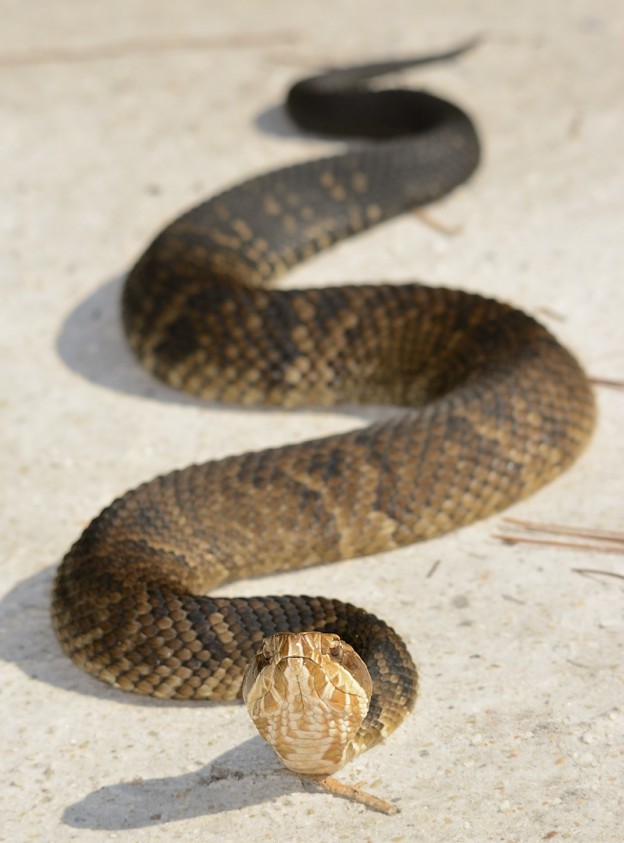
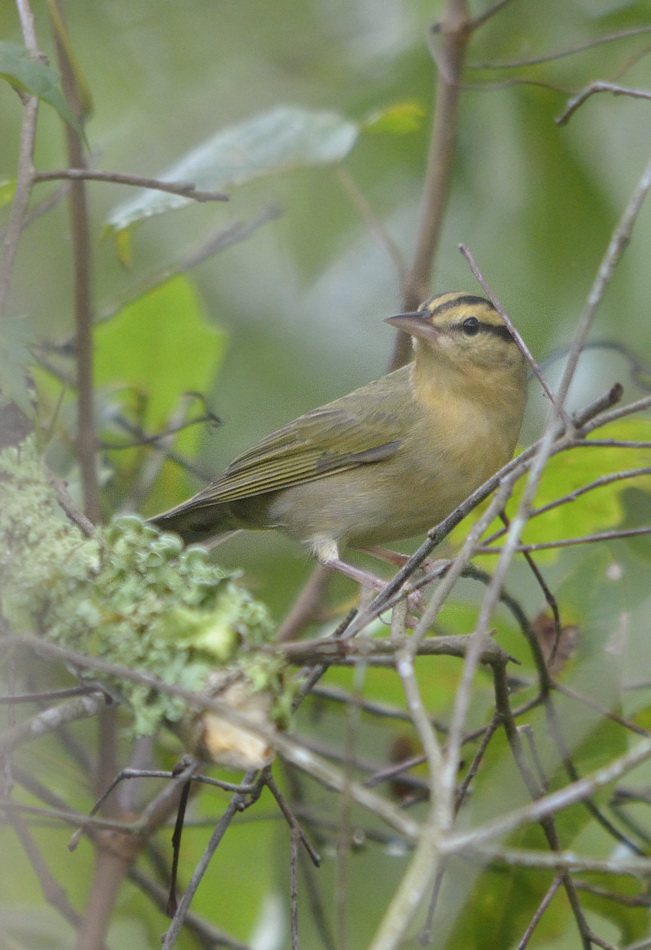
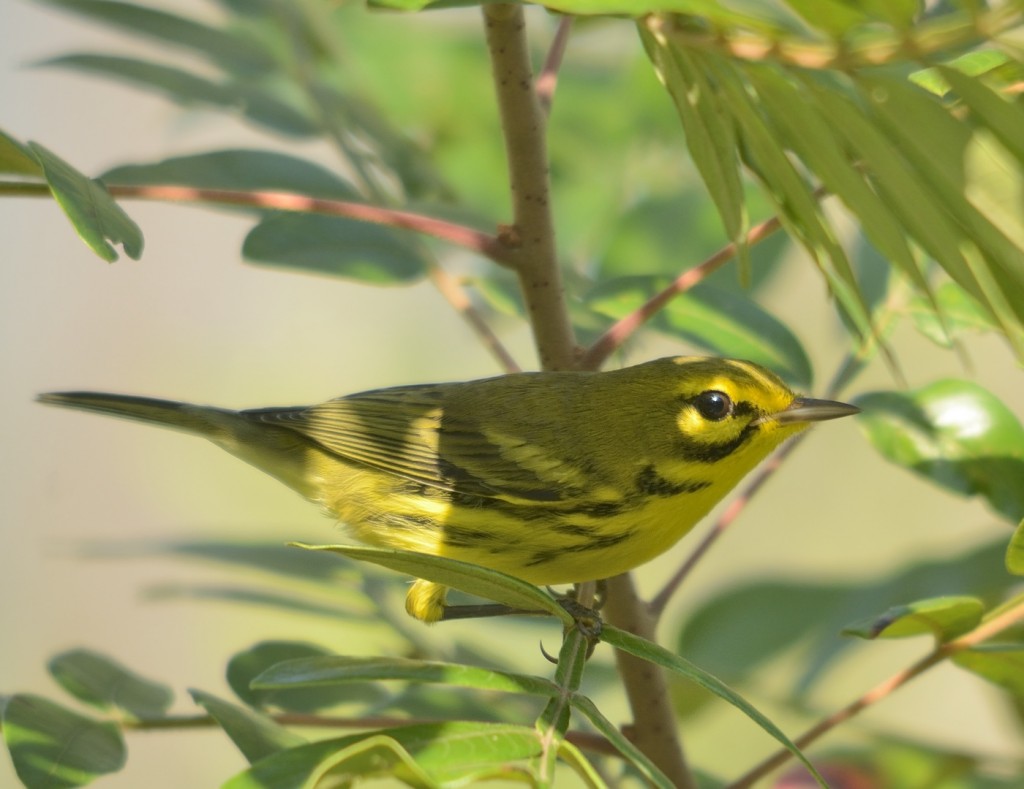
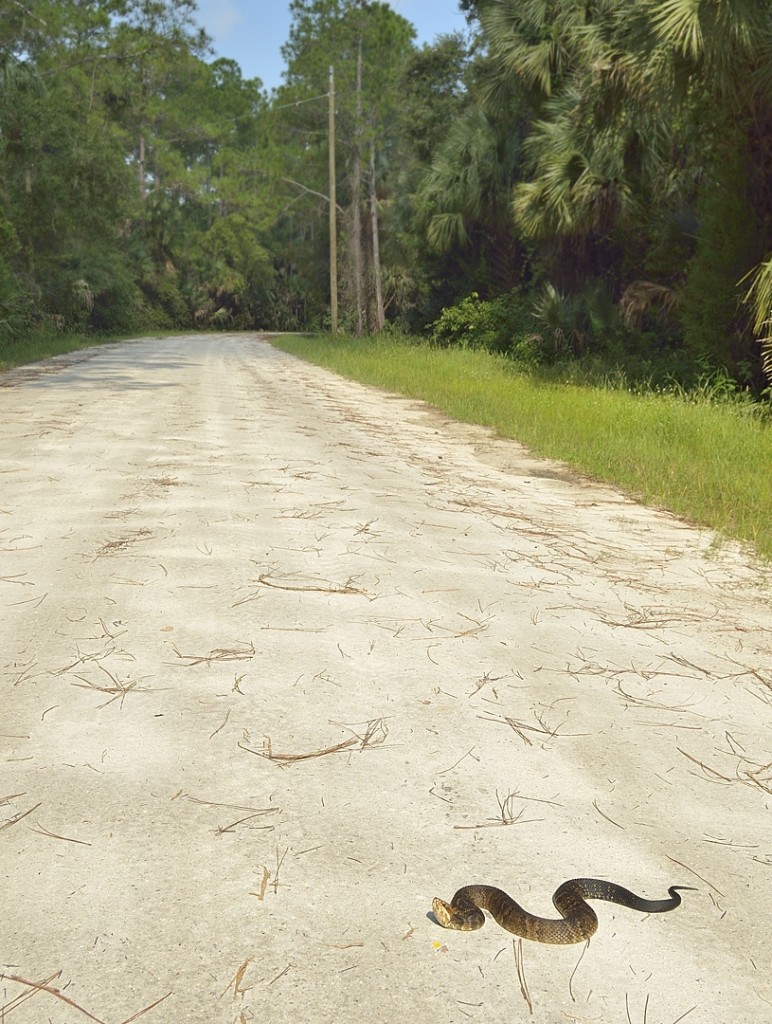
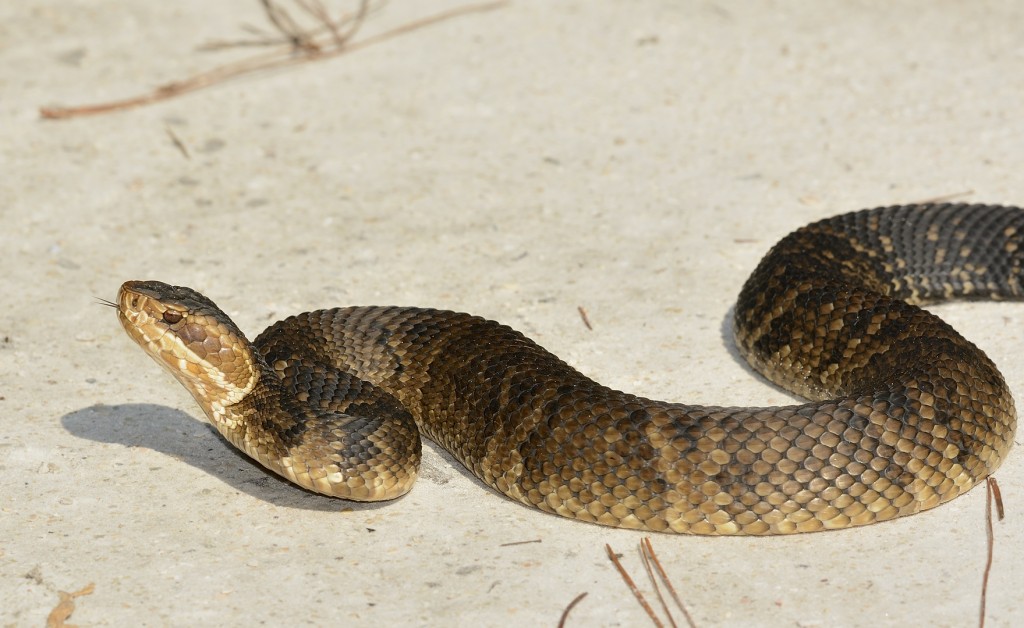
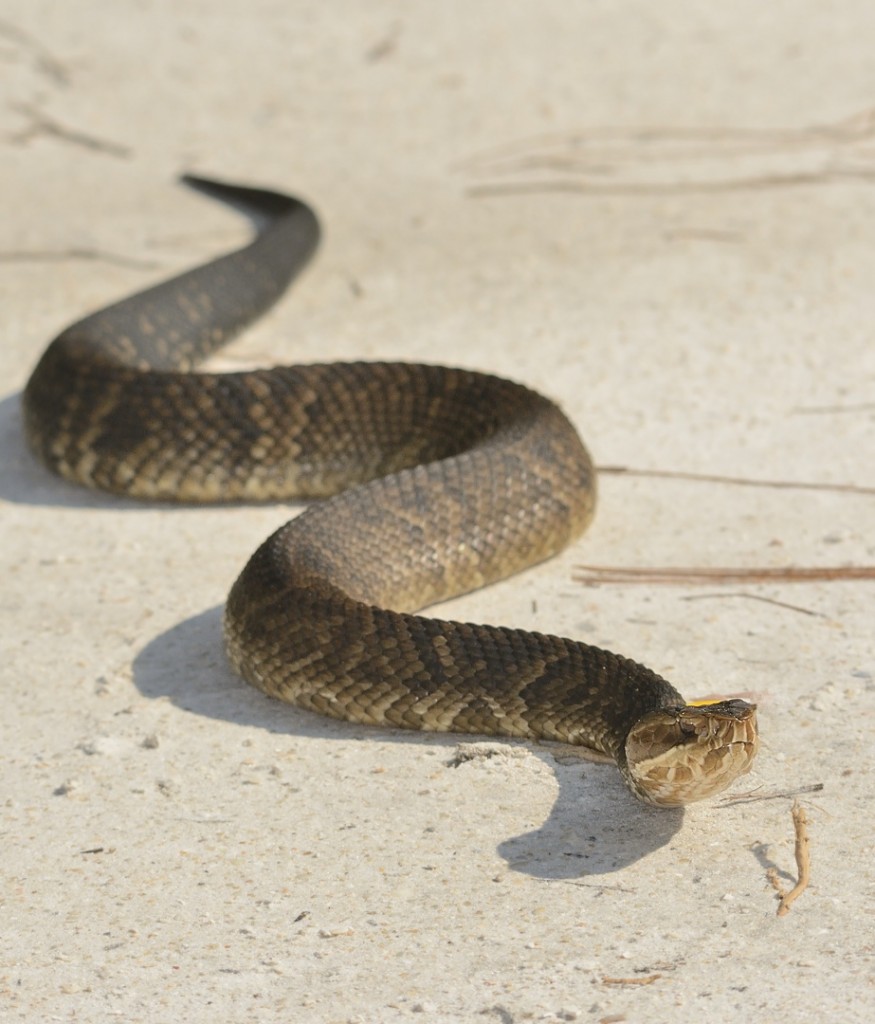
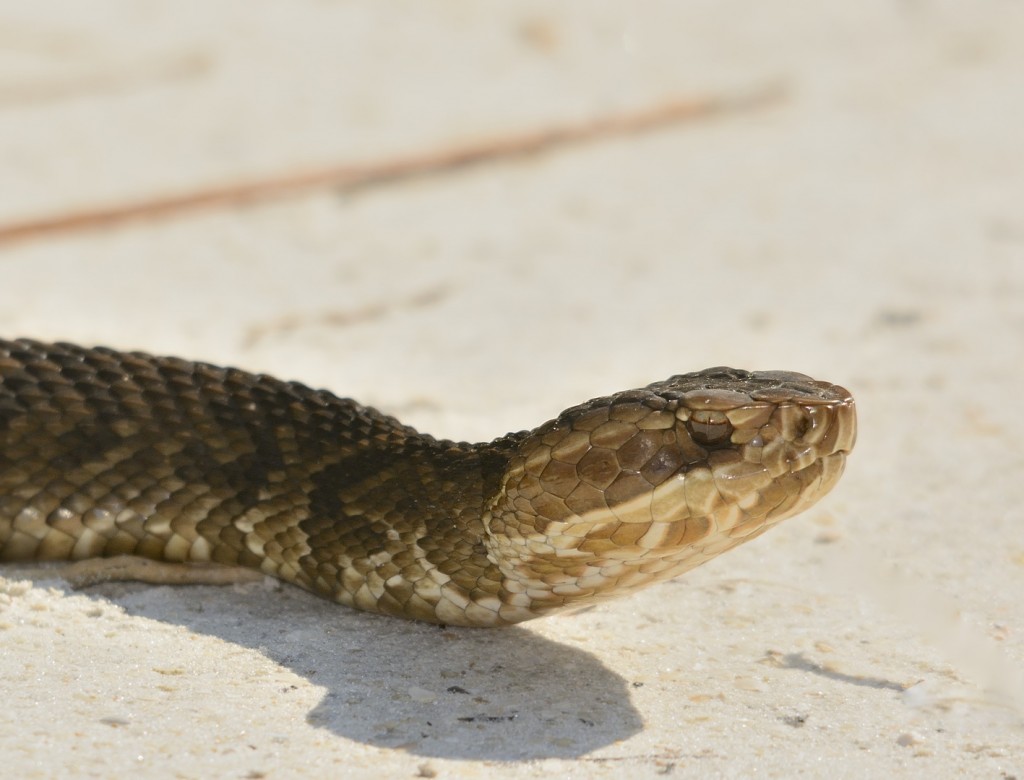
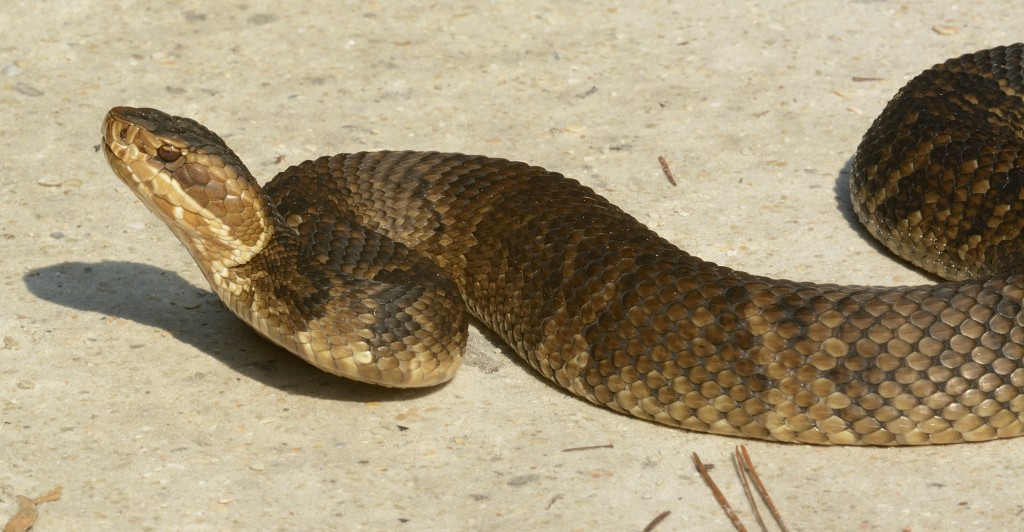
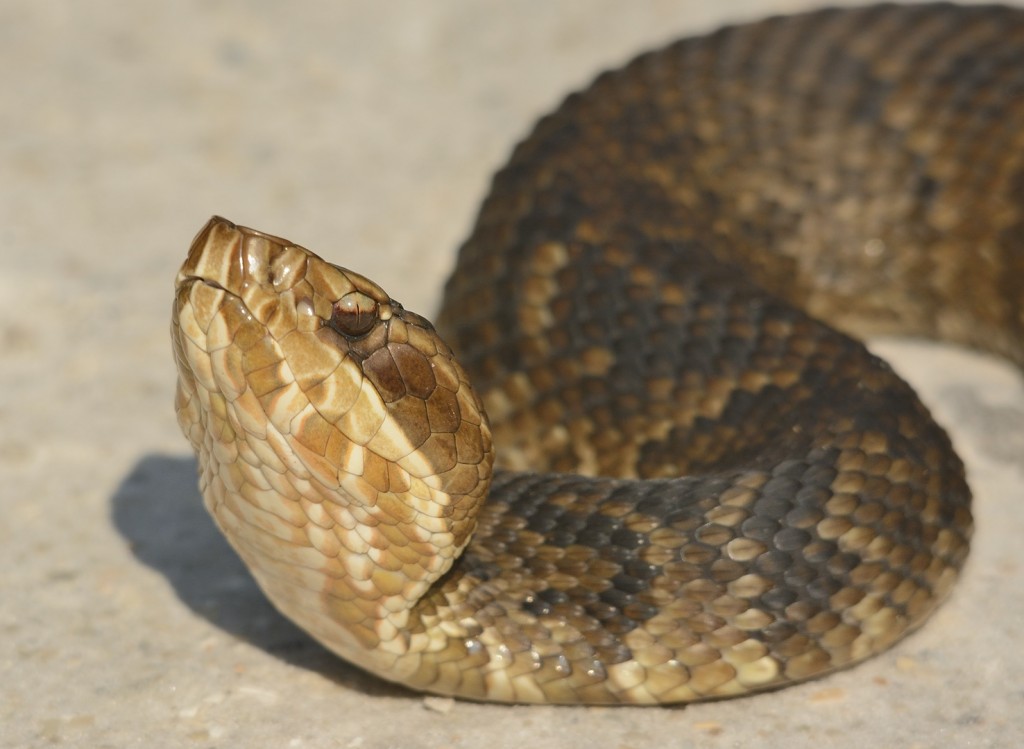
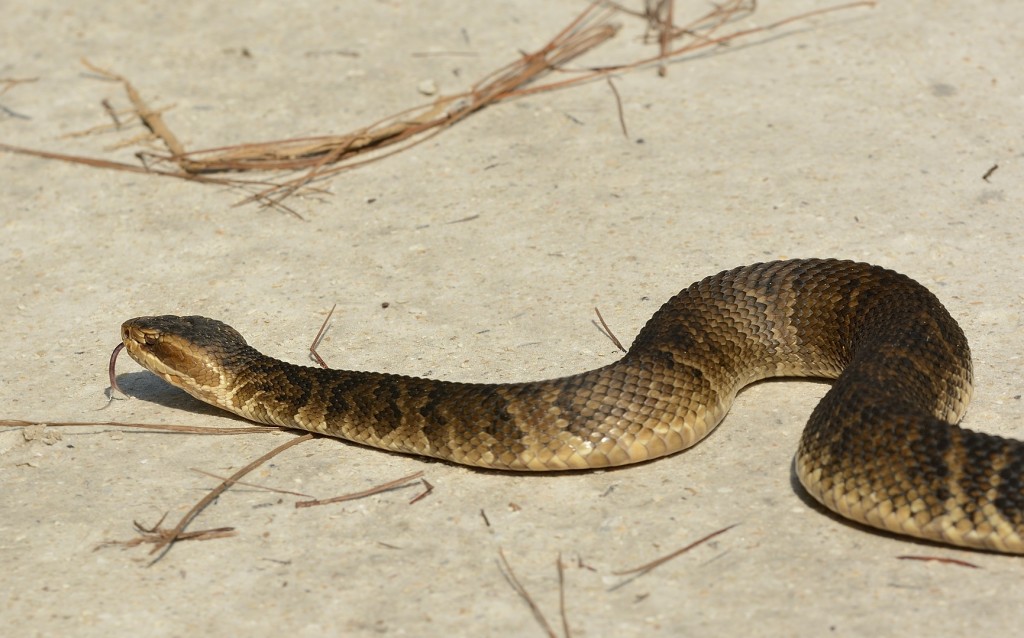
Most awesome, Peter. A cooperative cottonmouth always brightens my day! You know I’m just itching to explore SR40 westward now that I’m back in Volusia. The Haw Creek area used to be fantastic for cottonmouths. I need to get back there — and explore more westward. There’s so much off of 40 I haven’t done yet. This post is giving me the itch!
Cool piece Peter. I noted the UGA study on cottonmouths, but you’ve obviously already seen it. Bit of a myth buster, that, eh?
Thanks, Janson and David. There are many myths to bust when it comes to snakes, especially venomous species.
Your photo series made my day – THANKS!!